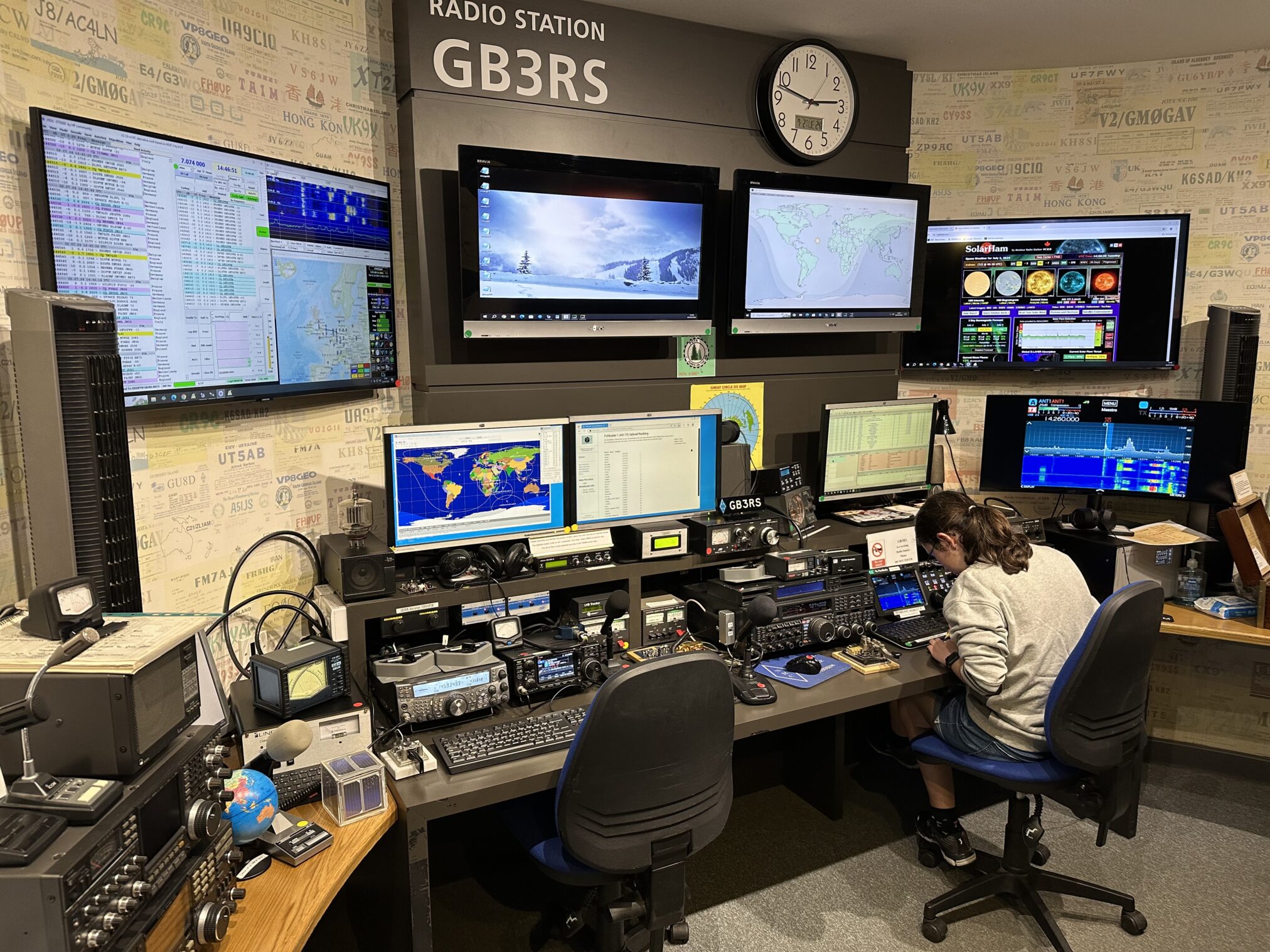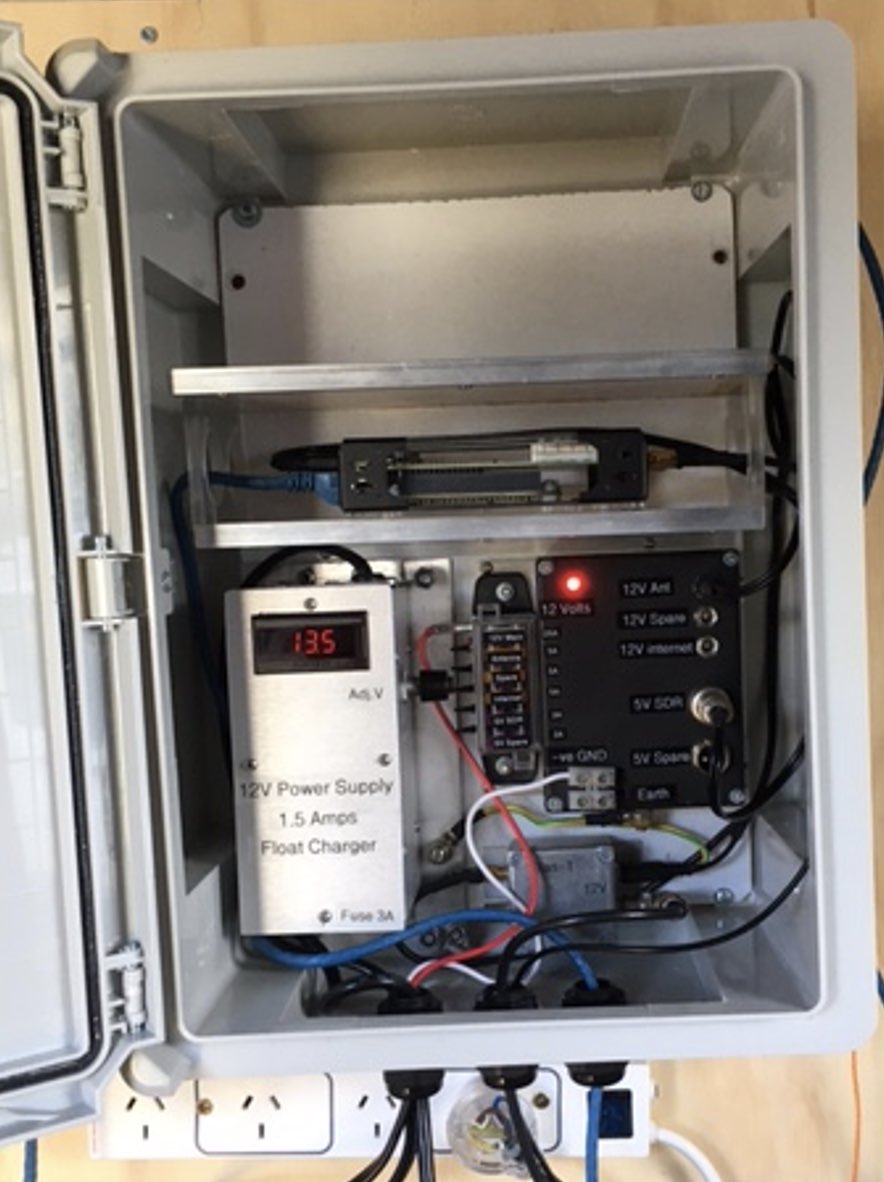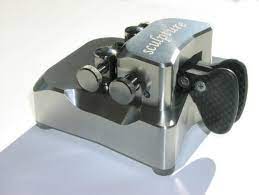
Laura ZL2LEP, one of our teen members, can be seen operating the GB3RS amateur radio station at Blechley Park in the UK. Bletchley Park is known for its work in breaking the German Enigma code during World War II.

Branch 50 (Wellington) NZART – Known as the Wellington Amateur Radio Club

Laura ZL2LEP, one of our teen members, can be seen operating the GB3RS amateur radio station at Blechley Park in the UK. Bletchley Park is known for its work in breaking the German Enigma code during World War II.

A club SDR receiver is up and running in Tangimoana (north of Wellington City) in a very quiet location for RF noise and can now be accessed by members and non-members via the KiwiSDR.com website. Search for ZL2WB to begin listening.
A web based remote HF receiver for RemoteDX members, and potentially a wider range of users was approved at the RemoteDX AGM in 2020. The remote SDR was funded and built by RemoteDX Inc. in September 2021. It was eventually installed under test at Tangimoana in May 2024. This project now falls under the control of the Wellington Amateur Radio Club.
The KiwiSDR is a 14-bit wideband RX only HF software defined radio created by John Seamons (ZL/KF6VO) which has up to 32 MHz of bandwidth, so it can receive the entire 10 kHz – 30 MHz VLF/LF/MW/HF spectrum all at once. However, it is not like a PC SDR as you do not connect the KiwiSDR directly to your PC. Instead the KiwiSDR is a cape (add on board) for the Beaglebone single board computing platform. Beaglebone is a small computing board that is like a Raspberry Pi. The KiwiSDR is designed to be a low-cost standalone unit that runs 24/7, connects to a HF antenna andinternet network, and shares 10 kHz – 30 MHz reception over the internet with up to 4 simultaneous users.
KiwiSDR is designed to be shared and accessed over the internet from anywhere in the world. You can connect to any one of more than 500 shared KiwiSDRs right now.
Tangimoana has been found to meet the key non-functional requirements for the SDR station, such as a low RF noise site, space for a suitable antenna, 230V mains supply and a good connection to the internet.
Power supply requirements for the Kiwi SDR and the Active Mag loop in use have taken account of the need for low RF noise at the site. The solution includes a Gel battery with a linear battery charger to achieve this.
Further equipment, including a second SDR receiver, is planned for the same location later this year to improve the resilience and capacity of the facility. A design report has been prepared and can be downloaded here:
We had seven HamCram participants in our June 2024 HamCram, and six passed the examination. Please welcome on the air the following new operators and members of Branch 50 NZART:

Eben ZL2EF provided an insightful introduction to morse code at our June 2024 regular meeting. He gave us t he history of morse code (known in amateur radio circles as “CW” or “Continuous Wave”), and pointers on how to learn the code – both for speed and for real world amateur communications. He also demonstrated his QRP CW transceiver and a range of different types of keys. Thanks also to George ZL2AG for bringing along his collection of “bugs” (mechanical automated keys).
Some key websites he referenced:
https://morsecode.ninja/ (Kurt Zoglemann)
https://cwops.org/cw-academy/ (CW Ops Academy)
https://longislandcwclub.org/ (Long Island CW club)
http://www.k1usn.com/sst.html (Slow Speed “Contest”)